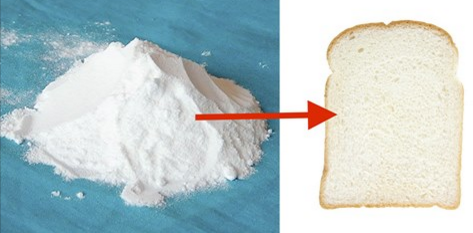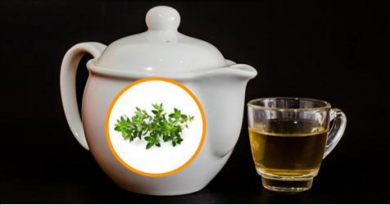The Toxic Food Additive In Bread You Didn’t Know You Were Eating…And How To Avoid It
The use of Potassium Bromate in the bread making process is wide spread several parts of the world; however, it has been banned in several other countries.
It is used to allow dough to rise further than normally possible while strengthening it. The IARC, or International Agency for Research on Cancer, has classified potassium bromate as being a possible carcinogenic risk to humans and placed it in the 2B carcinogen category.
Potassium Bromate Uses
The practice of using potassium bromate was patented because it was found to dramatically speed up the mixing process as well as produce stronger dough and make bread whiter.
Here’s Why It Got Banned…
The Division of Toxicology at the National Institute of Hygienic Sciences in Tokyo, Japan revealed that potassium bromate does produce carcinogenic effects.
California is the only state that regulates potassium bromate, requiring a Prop. 65-mandated warning label on food containing it. via LaTimes
The USDA Still Allows The Use Of Potassium Bromate
The USDA mandate says that enriched flour cannot contain more than 25 potassium bromate parts per billion in the finished product.
If these are not strictly controlled, the product result may exceed this mandate and contain harmful quantities of this ingredient.
Today, many small and commercial bakeries voluntarily avoid using bromated flour. However, it’s still found in many fast food buns, pizza crusts and some flours, among other products.
Scientific Substantiation
Experiments were performed by the Environmental Carcinogenesis Division of the U.S. Environmental Protection Agency in North Carolina to determine the carcinogenic effects of potassium bromate when used to disinfect drinking water through ozonation.
The results demonstrated risks for both kidney and thyroid cancer as well as the mesothelium and renal region within male subjects. The same study resulted in the following incidences:
- Renal cell polyps developed around the 52nd week mark of administration within those fed increased doses.
- Mesotheliomas were found at the same time mark of treatment on the serous membrane of the testes.
- After the 78th week mark mesotheliomas developed in other areas and it is believed those in the testicular region metastasized to the new sites.
- Thyroid follicular polyps developed in one subject as soon as the 26th week.
The Toxic Food Additive In Bread You Didn’t Know You Were Eating…And How To Avoid It









